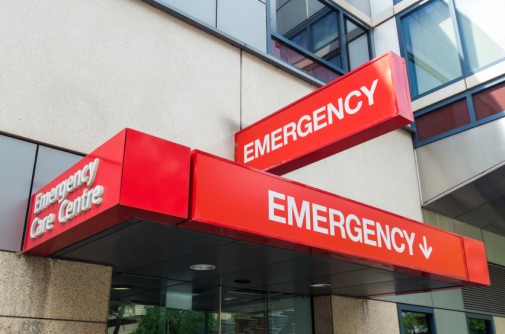Is the emergency room the right place to go?

There were 136.3 million visits to the emergency department in 2014, according to the U.S. Centers for Disease Control and Prevention.
That equates to about one in every three Americans visiting an emergency room in a year’s time. For those visiting the emergency room, only 27 percent were seen within 15 minutes of their arrival.
Experts question if these visits are really emergencies, or if a person would be better off visiting their primary care physician instead?
“Many emergency room visits could be avoided if patients contacted their primary care physicians first,” says Dr. Ronald Lawton, emergency medicine physician with Advocate Medical Group in Hazel Crest, Ill. “If you believe you have a medical emergency, you should immediately seek care in the emergency room. Many people, though, are turning to the ER rather than their physician’s office or an urgent care center even when their condition isn’t an emergency.”
Deciding where to go when a person is in pain, or trying to care for a sick child can be very difficult, but there are options available from a variety of resources based on the symptoms.
For example, the National Library of Medicine suggests people visit an emergency department if they are having trouble breathing, chest pain or pressure, sudden weakness or drooping on one side of the body, confusion or are having difficulty talking, heavy bleeding, or high fever that does not get better with medicine.
The emergency room is always available as an option, but Dr. Lawton says there are some cases when a person may want to rethink the visit.
Dr. Lawton shares a few tips:
- Cost: The cost of care in an ER can be significantly greater than going to the doctor’s office. If you are in for something that could be treated outside of the ER, you could pay much more for the service.
- Wait times: Having a known appointment time with your primary care physician is usually more desirable than having an unknown wait time in the ER.
- History of care: Your primary care physician has your visit records and knows your medical background. This may allow for treatment more tailored to your medical history and for better managed care over time.
If there is an emergency, do not hesitate to visit the ER, Dr. Lawton says. Before needing the ER, everyone should work to educate themselves on what is an emergency versus when it is not.
Related Posts
Comments
4 Comments
About the Author
health enews staff is a group of experienced writers from our Advocate Health Care and Aurora Health Care sites, which also includes freelance or intern writers.


















Obviously there are instances when calling a primary doc and waiting to be seen is impractical so what about using urgent care facilities? How do they compare cost wise compared to ER ?
The costs at urgent care centers vary by location, but in general their costs are significantly lower than ER’s, often up to 75% less.
Have you ever tried to get a same day appointment with your PCP? Wake up, Advocate, this is next to impossible.
Hi Carol,
While you may not be able to get in same-day with your own physician, some organizations, like Advocate offer same-day appointments to accommodate schedules. Learn more here: http://www.advocatehealth.com/bromenn-call-today-be-seen-today.